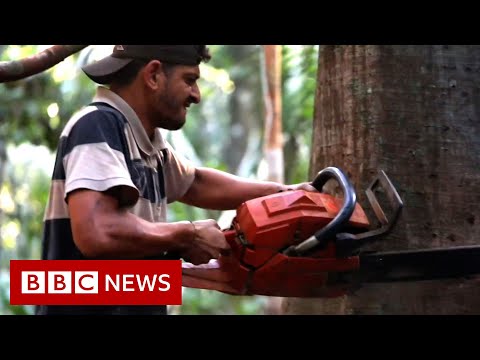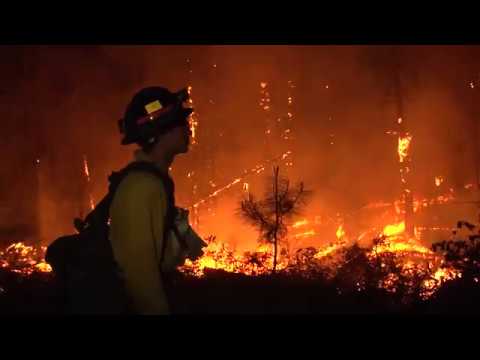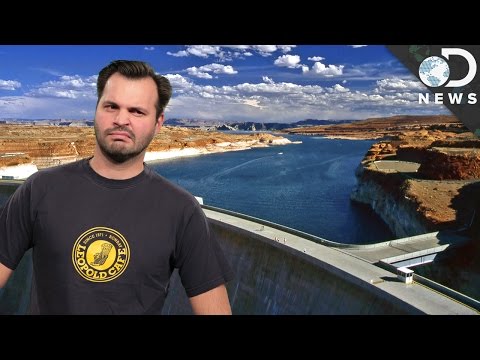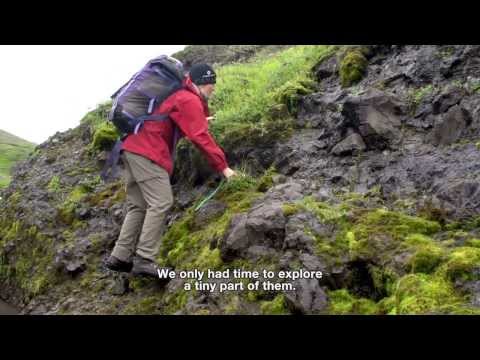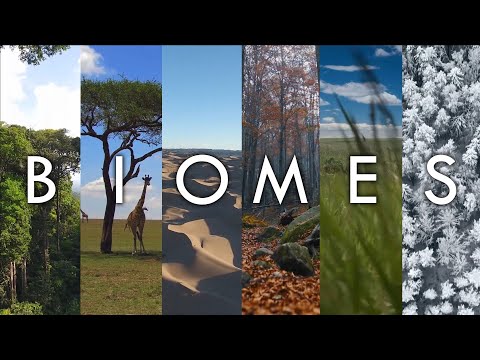Although most people are familiar with these biomes, many of us also have misconceptions regarding some (or all) of them. It’s understandable why we do: we have heard them repeated time after time, we may even have read that these mistaken ideas are true, and we haven’t personally visited some biomes. Even if we are one of the few who have been to either the Arctic or Antarctica, hiked or camped in a rainforest, or taken a submarine into the ocean’s depths, most of us can’t claim expert knowledge of such environments. So let’s look at ten of these misconceptions and learn more about the world around us.
10 Melting Ice Is Causing the Sea Level to Rise
The news is full of stories about melting icebergs, glaciers, and ice sheets, as this small sample of recent headlines indicates: “Greenland ice melting on Tuesday could cover Florida in 2 inches of water” (MSN); “Melting ice sheets are hastening sea level rise, satellite data confirms” (The Guardian); “Sea levels could rise by more than a foot by 2100 as ice sheets continue to melt” (Fox News). Melting icebergs, glaciers, and ice sheets, we are told, time and time again, constitute a big problem. NASA warns that the massive Greenland ice sheet is shedding about 300 gigatons of ice a year into the ocean, making it the single largest source of sea-level rise from melting ice. However, the U.S. Department of Commerce’s National Ocean Service unequivocally states that melting icebergs do not cause the sea level to rise. Remember, when you add an ice cube to your glass, the water level goes up. But when that ice cube melts, there’s no additional change in the water level. The same process applies to sea-level rise. In other words, while it is true that the sea level rises when icebergs, breaking away from glaciers, enter the water, once the chunk of ice is afloat, the level of the sea does not rise again when the ice melts; therefore, melting icebergs do not cause the sea level to rise.[1]
9 Swimming Against a Rip Current Allows a Swimmer to Return to Shore
According to the U.S. Lifesaving Association, more than 100 beachgoers drown each year due to rip currents that pull swimmers away from the shore. Many people mistakenly believe that such currents (sometimes known incorrectly as “rip tides”) pull swimmers underwater. However, such a belief amounts to a misconception since rip currents are actually strong, narrow currents that flow away from the beach. Also, rip currents are not tides because tides refer to really slow changes in water level and cannot produce rip currents. Being caught in a rip current can cause swimmers to panic and dive under a wave, only to discover that they return to the surface farther out to sea and are still in the grip of the rip current. Instead, swimmers in such a situation should remain calm and conserve energy. There is no reason to fear that such a current will pull you under in the ocean, either. Coastal hazards specialist Wendy Carey says to never “swim against a rip.” Instead, a swimmer should “swim parallel to the shore and out of the current” until the current is cleared. Then swim back to the beach. Carey adds another tip as well: “You may want to swim toward whitewater, where the waves are breaking… That may help guide you out of the rip.”[2]
8 The Ocean Is Hottest at the Tropics
The Department of Meteorology and Atmospheric Science in Pennsylvania State University’s College of Earth and Mineral Sciences defines the tropics as the area between the Tropic of Cancer (roughly 23.5-degrees North latitude) and the Tropic of Capricorn (roughly 23.5-degrees South latitude). However, the tropics are also defined, by some, as the area of the Earth between 30 degrees North latitude and 30 degrees South latitude because this larger region has “similar climate characteristics which extend that far from the equator.” Watch this video on YouTube In either case, though, during the year, the sun is directly overhead at each point in the area, and the tropics get a lot more sunlight than the rest of the planet. As a result, temperatures are much warmer throughout the year in the tropics than they are elsewhere on the planet, and tropical temperatures vary much less than the temperatures in other latitudes. It would seem to make sense, then, that the ocean is the hottest in the tropics. In fact, though, it is not. While land surfaces are hotter in the tropics, the ocean is hottest near its floor because of the thinness of the earth’s crust and the flow of red hot magma under the seabed. Should seawater enter a crack in the seafloor, it can be heated by the magma so fast that it can erupt from a hydrothermal vent at a temperature of 400°C (752°F)! Such temperatures would boil us alive if we were in the vicinity of such an explosion. Still, some organisms, extremophiles, actually thrive by converting minerals and chemical compounds in the water from these vents into sugars that they consume.[3]
7 Logging Is Responsible for Rainforest Deforestation
According to National Geographic, rain forests are disappearing at an alarming rate. They once covered 14% of the land on earth but now occupy only 6%, and over 50% of tropical rainforests have probably disappeared since 1947. As many as 10% of the species that live in rainforests could vanish every ten years, biologists fear, as more and more rainforest habitats are lost. The culprit? “Such rapid habitat loss is due to the 40 hectares (100 acres) of rainforest cleared every minute for agricultural and industrial development. This practice is for producing timber and wood pulp, feeding cattle, or clearing land for ranching, mining, or highway construction. The many uses to which harvested rain forests are put show that the idea that logging alone is responsible for destroying this biome is a misconception. In fact, current logging accounts for no more than 10% of the planet’s rainforest deforestation. Although logging does do harm to rain forests, especially when it is conducted illegally, due to its significant carbon emissions and their harmful effects on species richness. However, it is the other operations that reduce the expanses of rainforests that can have even more devastating effects on the biome. For example, agriculture accounts for 80 percent of deforestation in the tropics, with a large portion tied to just three commodities: palm oil, soybeans, and beef, ingredients in such “everyday products [as] toothpaste, shampoo, dog food, and granola bars.”[4]
6 All Deserts Are Hot and Barren, So It’s Good They’re So Rare
Since deserts are hot, we are lucky that they are also rare. Well, not quite. Despite these common misconceptions, the truth is that not all deserts are hot, and they are certainly not rare. Indeed, one of the driest deserts exists in Antarctica: the McMurdo Dry Valleys. These valley deserts are also intriguing because they are much like the Martian landscape, according to Life in Antarctic Deserts and Other Dry Environments. This is, in part, because, interspersed among various mountain ranges and glaciers near the Ross Ice Shelf on the continent’s southern coast, the McMurdo Dry Valleys are influenced by katabatic winds, active-layer cryoturbation, and cold-based glaciation. Basically, katabatic winds flow down the slopes of mountains, plateaus, and hills to the valleys or planes below. In Antarctica, such winds can attain gale force (LINK 10). In addition, they not only elevate air temperature but also transport snow, which contributes to unconsolidated landforms, and sand, which produces dunes. Active-layer cryoturbation, or the movement and mixture of frozen earth sediments due to the formation of ice, causes a thickening of the deserts’ dry surface, and cold-based glaciation produces ice sheets. In short, katabatic winds, active-layer cryoturbation, and cold-based glaciation, acting together, increase and sustain the build-up of land masses and ice in the deserts of the McMurdo Dry Valleys, which are anything but hot. Deserts are not rare, either. In fact, if they were grouped together, they would make up a third of the Earth’s surface! They are much more diverse, too, than many people may realize: some are hot and sandy; others can be cold, rocky, and even wooded.[5]
5 Forest Fires Totally Destroy Ecosystems
According to a common misconception, forest fires totally destroy ecosystems. However, instead, they, in a sense, reinvigorate them—as long as the fires are not too intense and do not become uncontrollable. The California Department of Forestry and Fire Protection states that low-intensity, controllable forest fires are actually vital to the survival of several species. Watch this video on YouTube They benefit ecosystems by cleaning the forest floor, allowing sunlight into the forest, and nourishing the soil by clearing away weaker trees and debris. As a result, the health of the forest is reinvigorated. At the same time, low-intensity fires can also help to prevent larger, more damaging wildfires. By clearing away thick vegetation, low-intensity fires also have the effect of increasing the water supply since fewer plants need water. Low-intensity forest fires kill diseases and pests that target trees and help to preserve some species of trees, which depend on a fire every three to four years since their bark and cones are fire resistant and require heat to open and release seeds for regeneration. Some plants, such as chaparral, manzanita, chamise, and scrub oak, likewise require intense heat for seed germination.[6]
4 The More Trees Planted, the Better
In Uttar Pradesh in northern India, 220 million trees were planted in one day; in Ethiopia, a month before, over 350 million trees had been planted in the same time period. William Bond, a grasslands researcher and professor emeritus at the University of Cape Town in South Africa, was not impressed. He advises, “Look at what they’re planting, where they’re planting.” Watch this video on YouTube Although many believe that the more trees planted, the better, this is not always the case, despite rainforest losses and record-high carbon dioxide levels. Planting as many trees as possible is not always a good idea because it is based on flawed science, says Shreya Dasgupta, a writer for Mongabay, a U.S.-based non-profit conservation and environmental science news platform. Planting as many trees as possible prioritizes “invasive trees over native ones,” may reduce “carbon sequestration and [increase] air temperature,” promotes trees that are “water-intensive and fire-prone,” and destroys savannas and other grasslands. By all means, trees should be planted, but such an enterprise should be done with care, based on scientific knowledge, principles, and practices.[7]
3 Dams Are Total Conservation Assets
The statistics are shocking: according to Jamie Pittock, the director of the World Wildlife Foundation’s Global Freshwater Program, a billion people across the globe lack access to fresh water. Twice that number lack proper sanitation services. Each year, over five million die of water-borne illnesses. Watch this video on YouTube The solution to these problems, many believe, is to build more dams to store water and generate hydroelectricity without damaging the environment. Doing so, it is thought, will lessen the ongoing water crisis. Sounds good: a simple solution to a horrific problem. Unfortunately, such a remedy is unfeasible for several reasons. The 48,000 existing dams, not to mention those which are being built, endanger the world’s largest and most important rivers. By fragmenting rivers, dams destroy wetlands, reduce such freshwater species as dolphins, fish, and birds, and displace human populations. Yes, dams can generate hydro-power, but the supply, like that of fresh water that the dams provide, is unreliable, and dam-building is much more expensive than practicing water-conservation procedures. The money spent on dam construction could be used to restore wetlands. When—or, rather, if—additional dams are built, their construction should adhere to the 2000 guidelines established by the World Commission on Dams, which are designed to mitigate risk.[8]
2 Plants Do Not Grow in the Arctic
Plants do not grow in the Arctic. It’s too cold and dark, and there’s nothing there but ice, rock, and snow. That’s the misconception. The truth is that, besides puffins and the common guillemot, there are quite a few Arctic hares and reindeer in the Arctic. Like lots of birds, both of the latter animals are herbivores. Since their diet depends exclusively on plants, they couldn’t live in the Arctic unless the polar region included plants. It does, of course. Although low-lying, for the most part, Arctic vegetation includes shrubs, herbs, lichens, and such hardy flowers as Arctic poppies. For a while, there are green and splashes of pink, purple, and other colors to admire and, for wildlife, to eat.[9]
1 Biomes and Ecosystems Are the Same Thing
Another misconception that many people believe is that “biome” is a synonym for “ecosystem.” Basically, they are just different words for the same thing. In fact, a biome is a large area characterized by its vegetation, soil, climate, and wildlife. There are five of them, some of which are subdivided into other, more specific categories. Watch this video on YouTube In short, to use National Geographic’s definition, a biome is “an area on the planet that is classified by the animals and plants in that area.” The same source defines an ecosystem as “a biological community of interactions between all living (biotic) and nonliving (abiotic) things in a particular area.” Animals and plants live in a biome; both living and nonliving things exist and interact with one another in an ecosystem. A biome is a large area or region; an ecosystem is a community, a network of interactions happening within an area. Since ecosystems exist within biomes, the destruction of either one can affect the other. In addition, the destruction of one biome can affect another. Sciencing gives this example: “Deforestation destroys the ecosystem and habitats within the forest biome, but the lack of trees can affect neighboring biomes.” With fewer trees, more erosion can result, and with less shade, changes in the weather can occur. More erosion and changes in the weather can, in turn, affect other biomes and ecosystems.[10]



